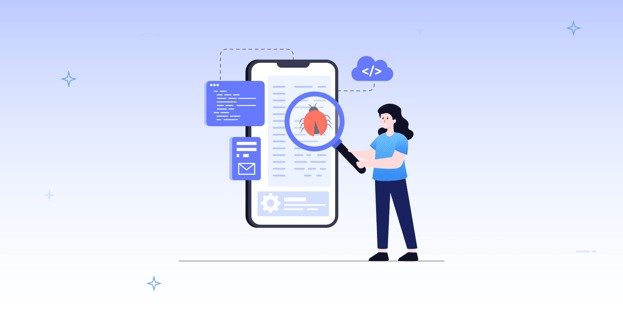How to Prioritise Vulnerabilities Found in Web App Pentesting for Rapid Fixes
In the fast-paced world of web development, speed often overshadows security. Startups and even established enterprises are racing to push new features, updates, and integrations, but this rush comes at a cost. Every line of code can open the door to a new vulnerability, and unless these issues are properly identified and prioritised, a single missed flaw can lead to serious data breaches or service disruptions.
That’s where a web app pentesting tool plays a crucial role. While running penetration tests can uncover hundreds of potential security issues, the real challenge lies in what comes next: deciding which vulnerabilities to fix first.
Let’s break down how to efficiently prioritise vulnerabilities found during web app pentesting, so your team can address the most critical risks faster and strengthen your overall security posture.
The Overwhelming Aftermath of a Pentest
After a pentest, it’s common to feel overwhelmed by the number of findings. Reports often include everything from low-severity configuration warnings to critical exploits that could lead to full data compromise.
Without a structured approach, teams waste valuable time debating which issues to fix first, or worse, they focus on easy wins instead of addressing real threats. A smart vulnerability prioritisation process ensures that the most dangerous flaws are resolved immediately, reducing the potential attack surface.
Start with Risk-Based Prioritisation
Not all vulnerabilities carry the same level of risk. Begin by evaluating each finding based on:
- Impact: What’s the worst-case scenario if this vulnerability is exploited? Could it lead to data leakage, account takeover, or service downtime?
- Exploitability: How easy would it be for an attacker to exploit this flaw?
- Exposure: Is the affected component publicly accessible, or is it buried behind authentication layers?
A web app pentesting tool often categorises vulnerabilities using CVSS (Common Vulnerability Scoring System) ratings. However, don’t rely solely on these numbers; consider your unique application context. For example, a medium-severity issue in a highly exposed API endpoint might be a higher priority than a high-severity flaw in an internal admin panel.
Use Business Context to Guide Fixes
Security isn’t just a technical issue; it’s also a business one. Your prioritisation strategy should reflect what’s most critical to your company’s operations and reputation.
Ask yourself:
- Does this vulnerability impact customer data or financial transactions?
- Could it affect uptime for key users or partners?
- Would exploiting this flaw damage our brand’s trust?
By aligning vulnerability fixes with business priorities, security teams can justify their actions to leadership and demonstrate that pentesting efforts directly protect revenue and customer relationships.
Group Similar Vulnerabilities for Batch Fixes
Instead of addressing vulnerabilities one by one, look for patterns in the pentesting report. Group similar issues together to streamline remediation.
For instance, if multiple endpoints suffer from the same input validation flaw, fixing the underlying validation function could resolve all related vulnerabilities at once.
This approach saves time, reduces developer frustration, and ensures long-term resilience against similar attacks.
Prioritise Exploitable Vulnerabilities
Some vulnerabilities may be difficult or impossible to exploit without specific conditions. Others, like SQL injection, cross-site scripting (XSS), or broken authentication, are highly exploitable and should be fixed immediately.
A quality web app pentesting tool provides proof-of-concept (PoC) evidence or exploitability details for each issue. Use this data to identify which flaws present a real, actionable threat to your application environment.
Leverage Automation for Faster Insights
Modern pentesting tools integrate seamlessly into CI/CD pipelines, allowing continuous assessment of new code commits. Automating vulnerability detection and triage can drastically reduce the time between identification and remediation.
Automation ensures that critical findings are flagged instantly, while recurring false positives are filtered out. This keeps developers focused on real risks without slowing down the release cycle.
Integrating automated pentesting within your development workflow also supports a shift-left security approach, addressing vulnerabilities early in the SDLC rather than waiting for production scans.
Collaborate with Developers Early
Vulnerability remediation shouldn’t be a security-only effort. When developers are involved early in the process, they better understand the root causes of security flaws.
Encourage collaboration between the security and development teams by:
- Conducting joint vulnerability review meetings.
- Sharing simplified pentest summaries that focus on developer-friendly language.
- Providing actionable remediation guidance directly from the web app pentesting tool report.
This shared understanding promotes faster, more accurate fixes and reduces the chance of the same vulnerability type appearing in future code.
Monitor Progress and Track Remediation Metrics
Security isn’t a one-time project; it’s an ongoing process. After prioritising and addressing vulnerabilities, it’s important to measure progress.
Track metrics such as:
- Mean Time to Remediate (MTTR): How long does it take to fix high-severity issues?
- Recurring Vulnerabilities: Are similar weaknesses reappearing across releases?
- Remediation Completion Rate: What percentage of vulnerabilities are fixed within a given timeframe?
These insights help refine your vulnerability management process and justify further investment in security automation.
Plan for Continuous Pentesting
Threats evolve every day, and so should your security testing. Relying on a single annual pentest leaves long gaps where new vulnerabilities may go unnoticed.
Instead, opt for continuous pentesting with an automated web app pentesting tool. This ensures that every code change, deployment, or configuration update is scanned for weaknesses.
Continuous assessment not only improves security hygiene but also integrates seamlessly into agile workflows, allowing developers to fix issues in real-time without waiting for lengthy pentest reports.
Final Thoughts
The true value of a pentest doesn’t come from discovering vulnerabilities; it comes from fixing them efficiently. By applying a structured, risk-based prioritisation strategy and leveraging modern automation tools, security and development teams can work together to resolve the most critical threats first.A web app pentesting tool helps you move from reactive to proactive security, ensuring that every vulnerability is handled with context, urgency, and precision. For startups and enterprises alike, that’s the foundation of a resilient application security strategy







